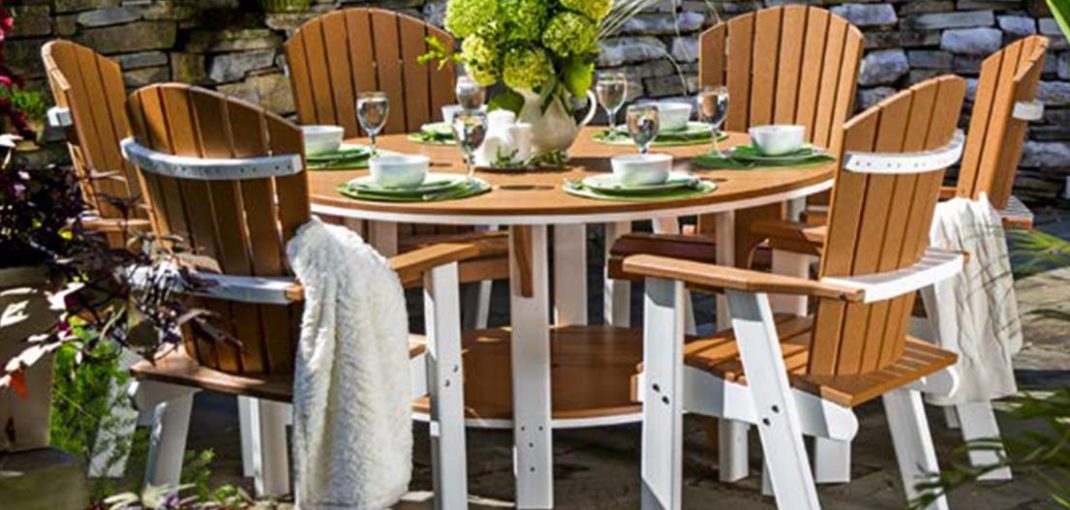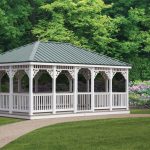When it comes to enjoying the great outdoors, having the right outdoor patio furniture can make all the difference. Whether you’re hosting summer barbecues or enjoying quiet evenings under the stars, your furniture deserves the best care to ensure it lasts for many seasons to come. At Atlantic Outdoors, we believe that maintaining your outdoor furniture not only protects your investment but also enhances your outdoor experience. Here are seven essential tips for keeping your patio furniture in top-notch condition.
1. Choose the Right Material
The first step in maintaining your outdoor patio furniture is selecting the right materials. Different materials require different levels of care. For instance, vinyl patio furniture is known for its durability and low maintenance, while wooden furniture can add a natural charm but may require more upkeep. At Atlantic Outdoors, we offer a variety of options including cedar, pressure-treated, and vinyl furniture, each with its own benefits and maintenance needs.
2. Regular Cleaning
Regular cleaning is critical to prolonging the lifespan of your outdoor furniture. Dust, dirt, and grime can accumulate quickly, especially if your furniture is exposed to the elements. Here’s how to effectively clean various types of furniture:
- Vinyl Furniture: A mixture of mild soap and water is usually enough. Simply wipe down with a soft cloth and rinse with water.
- Wood Furniture: Use a soft brush to remove dirt and debris, followed by a gentle soap solution. Avoid using a pressure washer, as it can damage the wood.
- Metal Furniture: Wipe with a damp cloth and mild soap. Be sure to dry thoroughly to prevent rust.
3. Protect Against the Elements
Weather can be unpredictable, and protecting your outdoor patio furniture from harsh conditions is essential. Here are a few strategies:
- Covers: Invest in high-quality furniture covers to shield your furniture from rain, snow, and UV rays when not in use.
- Location: If possible, position your furniture under a pergola or gazebo to provide natural protection from the sun and rain.
- Storage: During the off-season, consider storing your furniture indoors or in a dry area to prevent wear and tear.
4. Use Outdoor Furniture Cushions Wisely
Cushions can add comfort and style to your outdoor space, but they require special attention. Here’s how to keep them in great shape:
- Waterproof Options: Choose cushions made from water-resistant materials to help prevent mold and mildew.
- Storage: Store cushions indoors or in a dry place during inclement weather or when not in use.
- Cleaning: Regularly vacuum and spot clean your cushions to avoid dirt build-up. Most cushions can be washed with mild soap and water, but always check the care label first.
5. Inspect for Damage
Regularly inspect your furniture for signs of damage. Look for:
- Rust: If you have metal furniture, check for rust spots. Treat these promptly with rust-inhibiting paint or a rust remover.
- Cracks or Splits: Wooden furniture can develop cracks or splits. Sand down rough areas and apply a protective sealant to prevent further damage.
- Loose Parts: Tighten screws and bolts to ensure your furniture remains stable and safe.
6. Seasonal Maintenance
Seasonal maintenance is a proactive way to keep your outdoor patio furniture in excellent condition. Here’s what to do at the beginning of each season:
- Spring: Clean your furniture thoroughly, inspect for winter damage, and apply protective coatings as necessary. This is also a great time to bring out any stored cushions.
- Summer: Ensure your furniture is clean and check for any signs of wear from heavy usage. This is also a good time to refresh your cushions or add new ones.
- Fall: Prepare for winter by cleaning your furniture and applying covers. Store cushions indoors to protect them from moisture.
- Winter: If your furniture is kept outdoors, ensure it is covered and protected from snow and ice. For wooden furniture, consider applying a sealant to protect against moisture.
7. Professional Help
Sometimes, even the best maintenance can’t prevent wear and tear. When your furniture needs more than just a simple clean, don’t hesitate to seek professional help. For extensive repairs, refinishing, or cleaning, consider hiring a professional service to restore your furniture to its original glory.
Maintaining your outdoor patio furniture doesn’t have to be a daunting task. By following these essential tips, we can ensure that our outdoor space remains a beautiful and inviting area for relaxation and entertainment.
Ready to elevate your outdoor experience?
At Atlantic Outdoors, we offer a wide selection of outdoor patio furniture, including cedar, pressure-treated, and vinyl options designed to withstand the elements and provide comfort. Explore our collection today and invest in quality that lasts. Don’t forget to sign up for our newsletter for exclusive promotions and valuable tips to enhance your outdoor living space!
Shop now and transform your backyard into a serene oasis with Atlantic Outdoors!
FAQs:
1. What materials are best for outdoor patio furniture?
Outdoor patio furniture is available in various materials, including vinyl, cedar, and pressure-treated wood. Vinyl is known for its durability and low maintenance, while cedar offers a natural aesthetic but may require more upkeep. Pressure-treated wood is resistant to rot and insects, making it a popular choice for outdoor settings.
2. How often should I clean my outdoor furniture?
It’s recommended to clean your outdoor furniture at least once a season. If you live in an area with high pollen counts or dust, you may want to clean it more frequently, especially during the spring and summer months when it’s used most often.
3. What is the best way to store outdoor cushions?
To maintain the quality of your outdoor cushions, store them indoors or in a dry, sheltered area during inclement weather or when not in use. If indoor storage isn’t possible, consider investing in waterproof storage bags or boxes to protect them from moisture.
4. How can I prevent rust on metal furniture?
To prevent rust on metal outdoor furniture, regularly check for any scratches or chips in the paint. Touch up these areas with rust-inhibiting paint as soon as possible. Additionally, storing metal furniture indoors during winter months can significantly reduce the risk of rust.
5. What should I do if my wooden furniture starts to crack?
If you notice cracks in your wooden furniture, sand down the affected areas to smooth them out and apply a protective sealant or wood conditioner. Regular maintenance and sealing can help prevent further damage.






